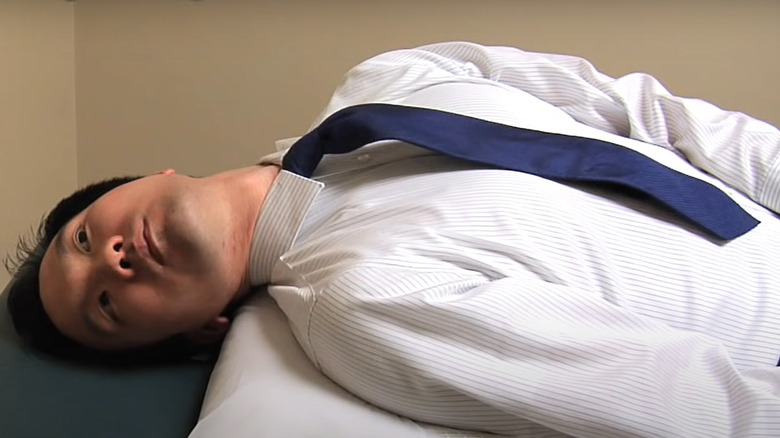What Is The Epley Maneuver For Treating Vertigo?
Vertigo is a condition in which a person has the perception that the world around them is spinning, and it's the result of underlying issues that concern the inner ear and brain, as explained by the Cleveland Clinic. It is usually experienced in short bursts, lasting just a few minutes. However, there are exceptions to this, and some may feel the symptoms of vertigo for longer periods of time. While vertigo is a symptom itself, it can also co-exist with other symptoms as the result of dizziness, including nausea, vomiting, headaches, and trouble maintaining balance.
Most people who deal with vertigo are diagnosed with an inner ear condition, which can include benign paroxysmal positional vertigo (BPPV), vestibular neuritis, and Meniere's disease, points out WebMD. The role of the inner ear is to maintain a person's sense of balance through the combination of fluid and small hairs — they measure motion and send the information to the brain, as Healthline. When this machinery is damaged or not working properly, such as in the case of the above conditions, an individual's sense of balance is thrown off, leading to vertigo.
There are multiple ways to treat vertigo and prevent the dizzy spells associated with it, including exercises that can be carried out at home. One such exercise that is specifically designed to treat vertigo associated with BPPV is known as the Epley maneuver, per the Cleveland Clinic.
The Epley maneuver is an effective short-term treatment for vertigo
The Epley maneuver is designed to eliminate the symptoms of vertigo for those diagnosed with benign paroxysmal positional vertigo (BPPV). This is when calcium carbonate crystals that naturally exist in the inner ear become loose and interrupt the ability to regulate balance, states the Cleveland Clinic. The maneuver aims to relocate these crystals out of the inner ear and restore normal functioning. The best part is you can alleviate your symptoms on your own in just a few minutes once a day.
The direction in which you carry out the maneuver will depend upon whether you can pinpoint your vertigo to the left or right ear, explains MedicalNewsToday. For the former, you'll want to position yourself on a bed and move your head 45 degrees to the left. Maintaining this position with your head, lay back on the bed, and stay put for half a minute. You'll then want to turn your head 90 degrees to the other side and hold the angle for another 30 seconds. The next step is to move your entire head and body to the right so that you are facing down into the bed, once again staying here for 30 seconds. Finally, sit back up and monitor how you feel. At this point, the vertigo symptoms should have disappeared. For vertigo that is located in the right ear, you'll carry out the same steps, but on the opposite side.


